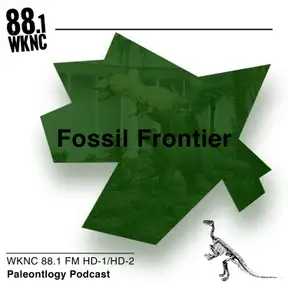Carcinization: Why Every Animal Will Evolve Into A Crab
Download MP3Scrimble 0:00
Hello, everybody. I'm scrimble and welcome to the first episode of my new podcast fossil frontier, a paleontology podcast brought to you by WKNC 88.1. This show will be dedicated to talking about my favorite fossils and prehistoric phenomena. We're going to explore some of Earth's ancient treasures and uncover the stories they have to tell. So if that's something you're into you better lock in because this week, we are talking about carcinization. Why do things keep evolving into crabs? What can we do to stop it? Will everybody become a crab sooner or later? Stay tuned to find out.
Okay, So picture this. It's the late Devonian period, about 365 million years ago, while tetrapods were first beginning to explore land, bony fish and coral reefs were taking over underwater. At this point, the first Decapod crustaceans are also appearing. These organisms belong to order decapoda the ancestors of shrimp, lobsters and crabs. There are a few inferred sources of earlier members of order decapoda such as suborder dendrobrachiata, or prawns splitting off from the evolutionary tree late in the Ordovician period about 455 million years ago. But the earliest actual fossil of order decapoda is the palaeopalaemon, a lobster like organism with antennae and two front claws. So this crustacean, along with many others, started evolving alongside a boom in coral reefs which became their main habitat. They use the recess shelter and mainly aid to breathe down on the sea floor with mandible specially designed to pick up small critters in organic matter.
So at this point, and for about 150 million years after the only decapods found on the seafloor, it looked pretty much like lobsters and shrimp like the palaeopalaemon. That was until the family tree split off into two very important info orders, the first being info order brachyura, or true crabs. The first true crab was yoke arsonist, which came from about 150 million years ago. And while it still had a somewhat elongated body and antennae like a lobster, scientists have agreed that this is the first true crab. The other infraorder of decapods is anomura, or false crabs, the first of which being the platykotta, which almost fully resembled a lobster. These two first species would be known as stem-group crabs, which would then undergo carcinization.
So carcinization is the process that has been seen time and time again, in which crustaceans that at first resemble lobsters begin to evolve to have more crab like features such as a shorter and flatter body. The first to do this or of course, the true crabs, which would evolve into most of the crabs that we know and love today, from the widely eaten blue crab to the spindly, spider crab and the petite ghost crab. However, the interesting aspect of carcinization is what happened with the false crabs. Throughout prehistory, more and more false crabs began to undergo carcinization, to form species such as coconut crabs, hermit crabs, and most interestingly, the large king crab, which evolved from tiny hermit crabs, as shown by their asymmetrical abdomens. While these crustaceans may look like crabs, they actually aren't. Rather, they're a secret third thing, yet another victim of carcinization. So the question remains, why do all these animals keep evolving into crabs? Why would a lobster-like creature ever want to abandon its long, slender body for a more curvaceous, round abdomen? Are they just wannabes who have never had an original thought in their lives? Or is there something more sinister looking just below the surface? Well, the answer is actually pretty straightforward. So during the Cretaceous Period, about 100 million years ago, there was a process called the Cretaceous crab revolution, in which most of the true crabs that are around today evolved. This evolution was coupled with the wider Mesozoic marine revolution, which occurred in response to the appearance of Shell crushing predators, such as the ichthyosaur and plesiosaur. Many sea creatures developed stronger shells and better strategies to protect themselves from these dinosaurs. Furthermore, the false crabs began developing crab like bodies in response to this revolution, presumably for greater mobility both in the water and on land, as well as a greater ability to escape the shell crushing ichthyosaur. It makes sense why they would want to abandon their lobster like ways for a crab lifestyle. These adaptations allow the false crabs to survive longer and reproduce more. So they were selected in the evolutionary gene pool. So ultimately, carcinization was just a natural conclusion for many species when faced with the harsh environment that a prehistoric Earth provided. You know, it's something to think about with all the pressures of daily life, work, school, relationships, giant shell crushing dinosaurs, maybe we should all consider ditching human life to become one of the crabs. Thank you for listening to the first episode of my new podcast fossil frontier. This has been a WKNC podcast Good night and I love you the audio use in this podcast was Song Thrush nature field recording garden atmo, recorded by Garuda 1982 and dramatic 11 recorded by digit fish music under Creative Commons license.
Transcribed by https://otter.ai

